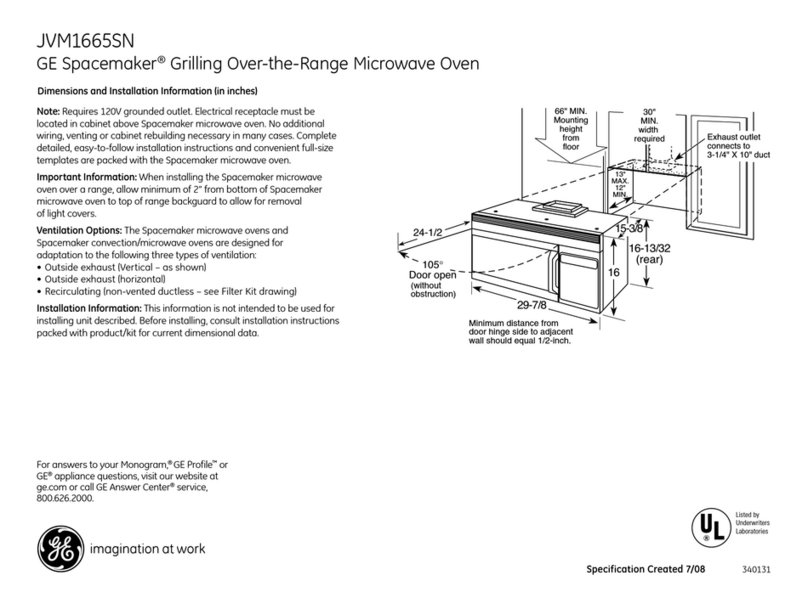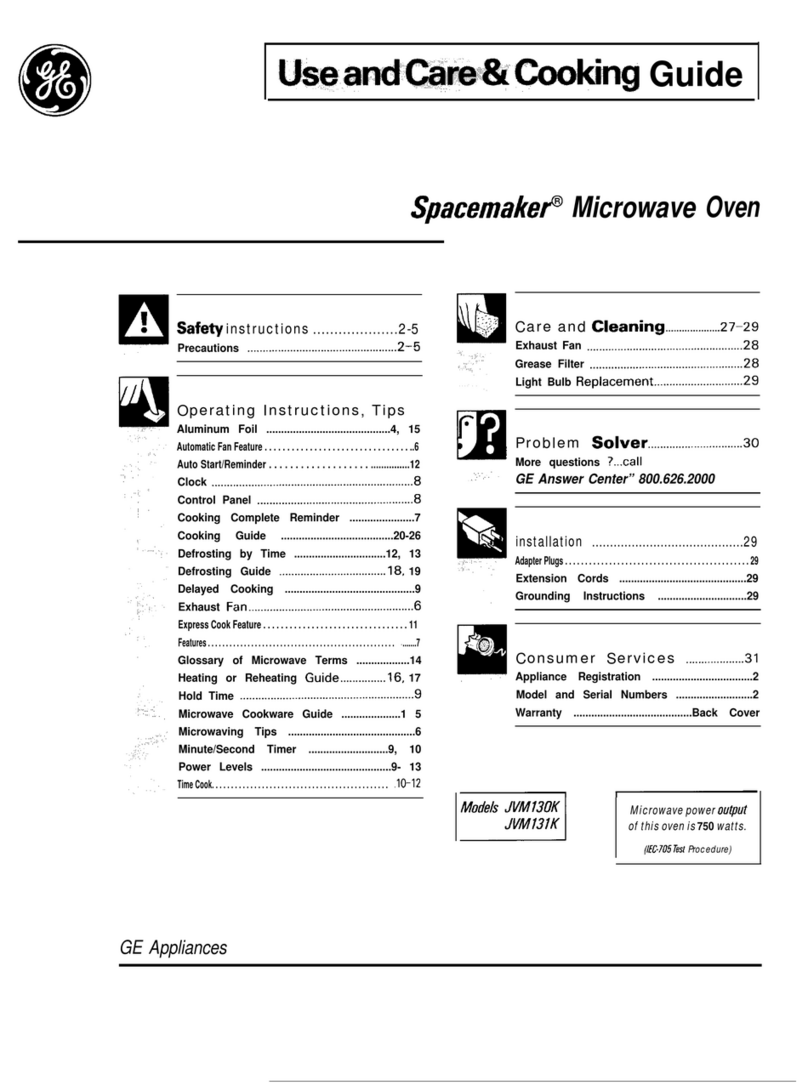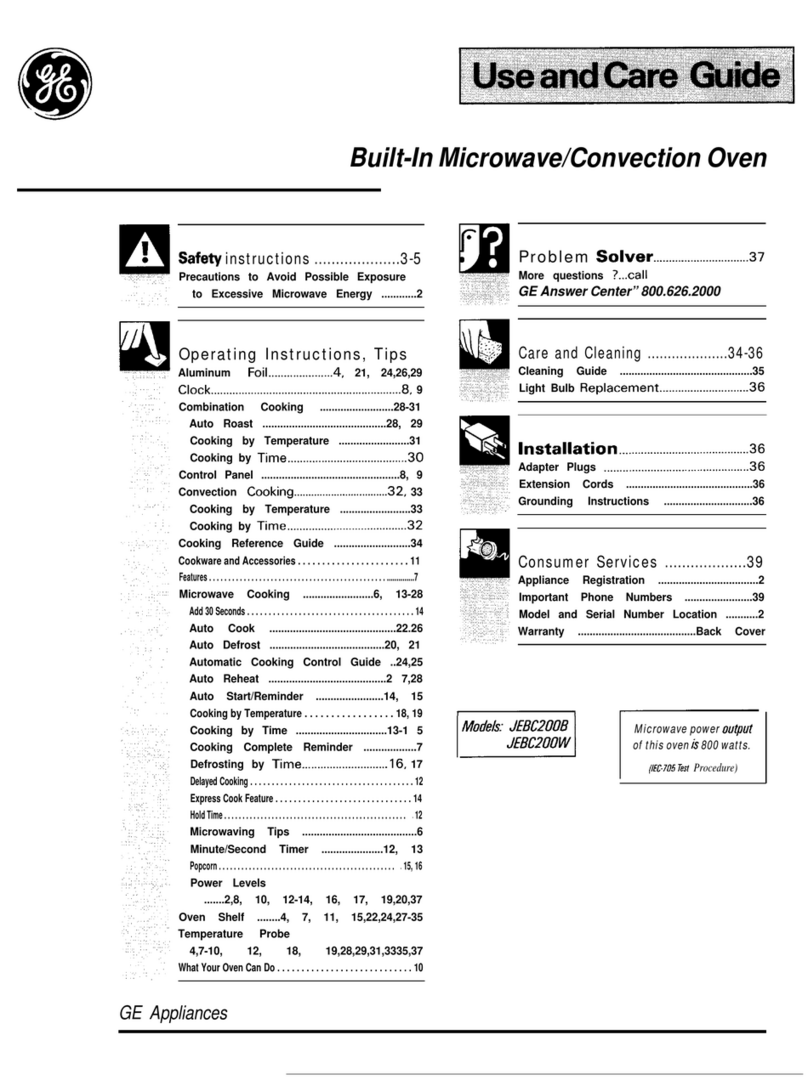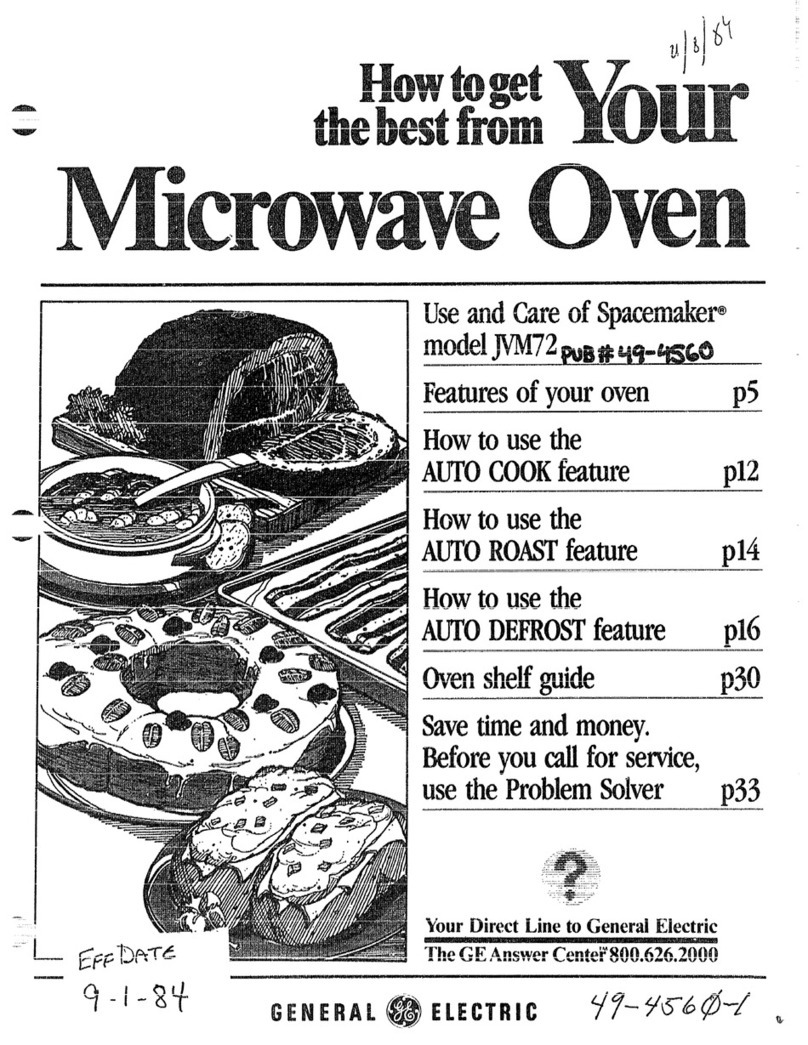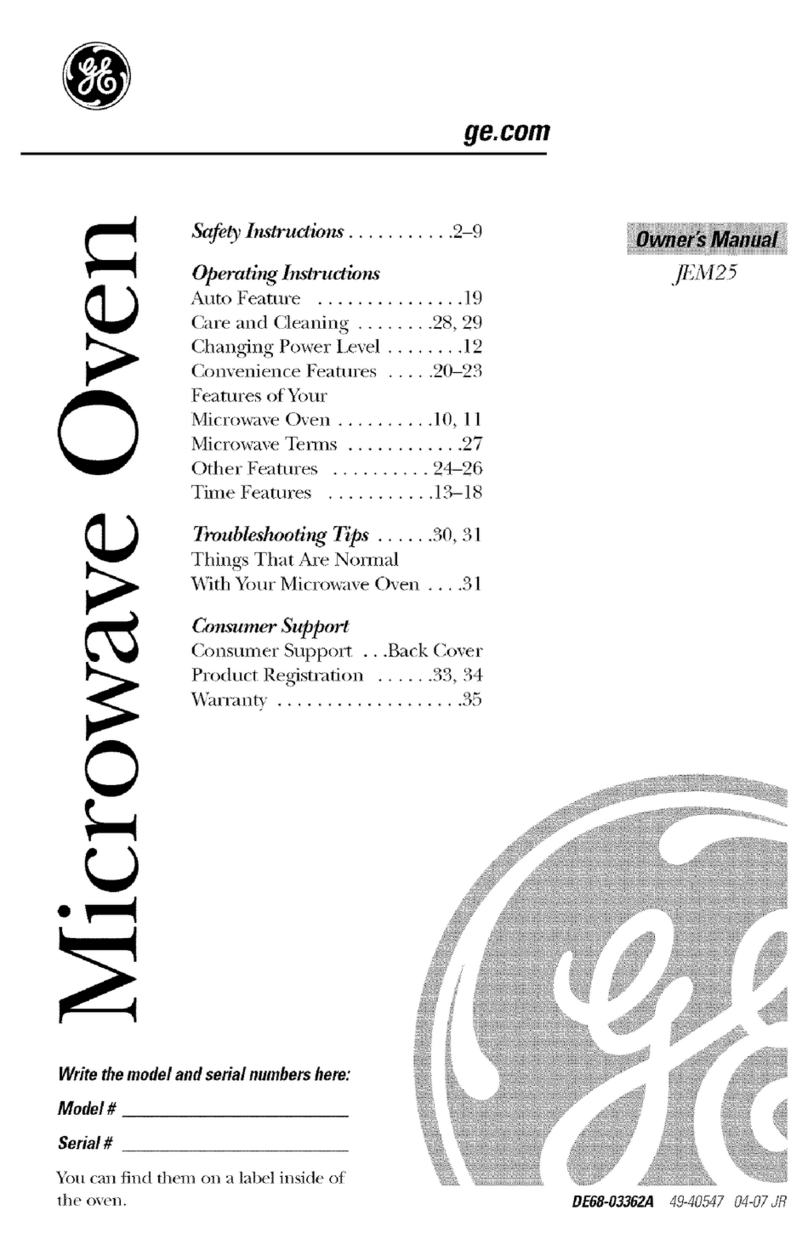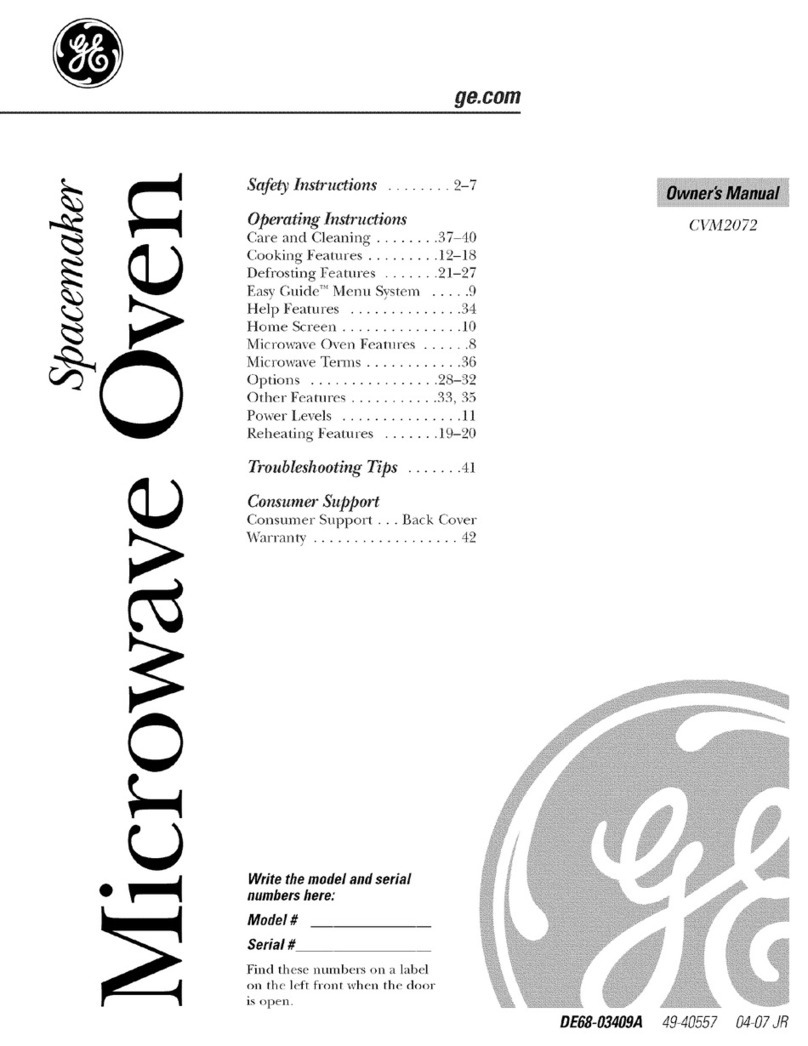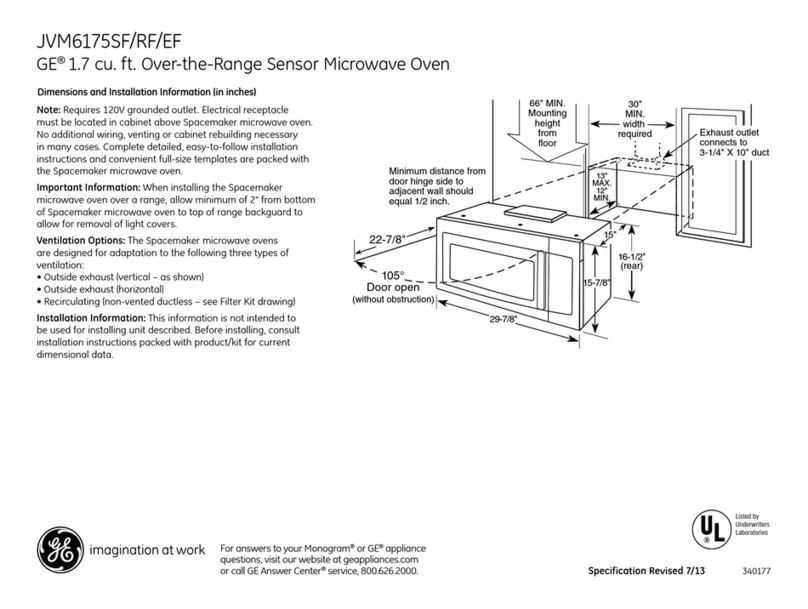GE JES1142WPC User manual
Other GE Microwave Oven manuals

GE
GE JEI2340WPSL User manual
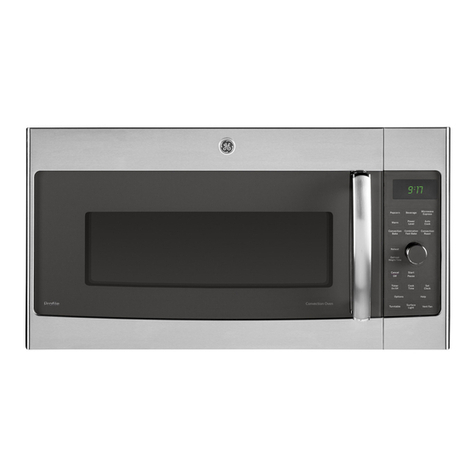
GE
GE PVM9179, PSA9120, PSA9240 Operating instructions

GE
GE CSA1201RSS User manual
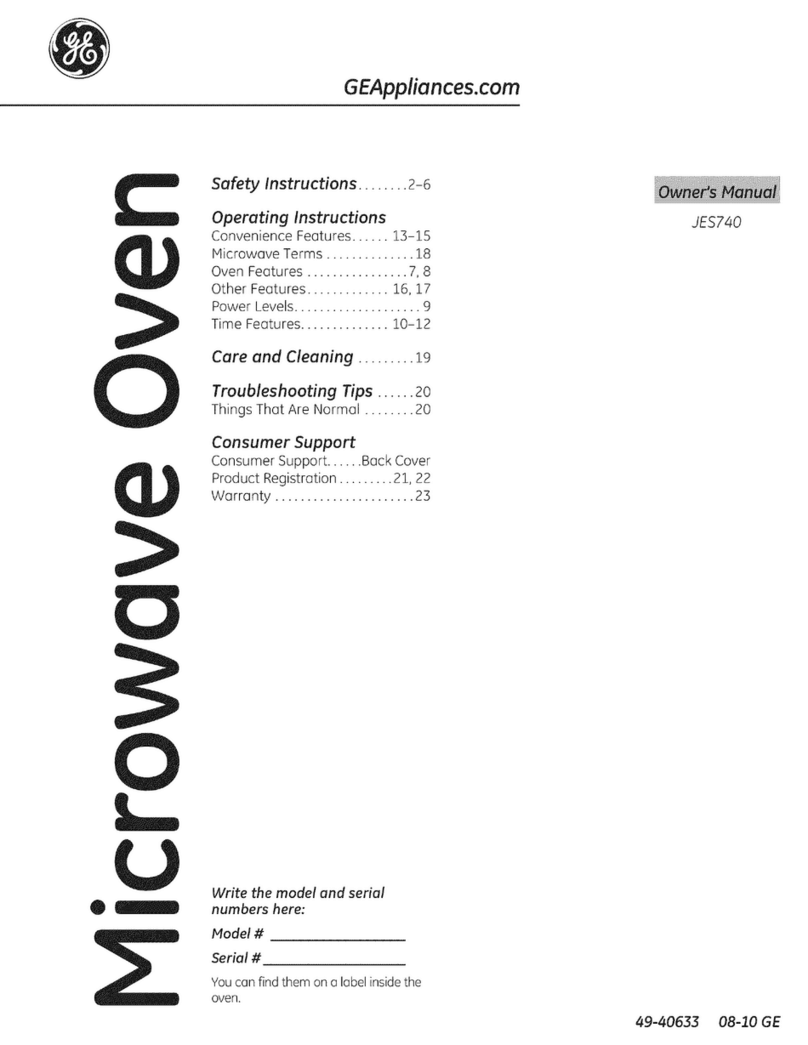
GE
GE JES740D User manual

GE
GE Spacemaker 49-4425 Installation instructions

GE
GE CEB1599 Series User manual
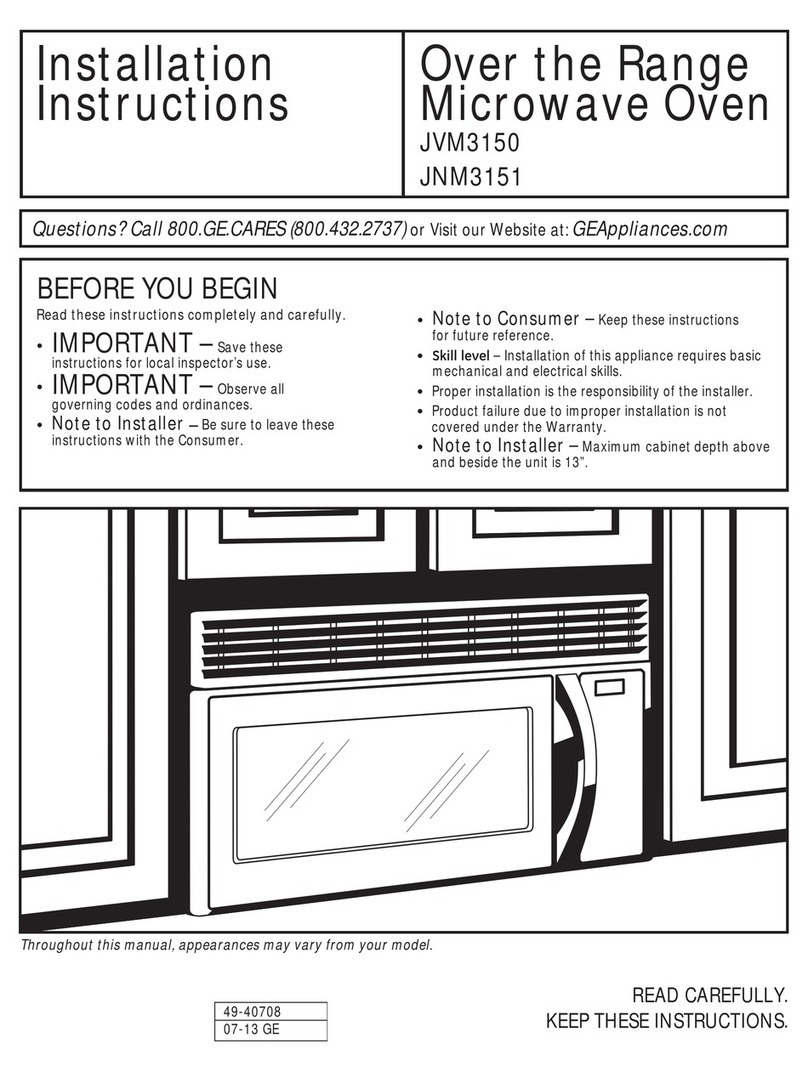
GE
GE JVM3150 User manual
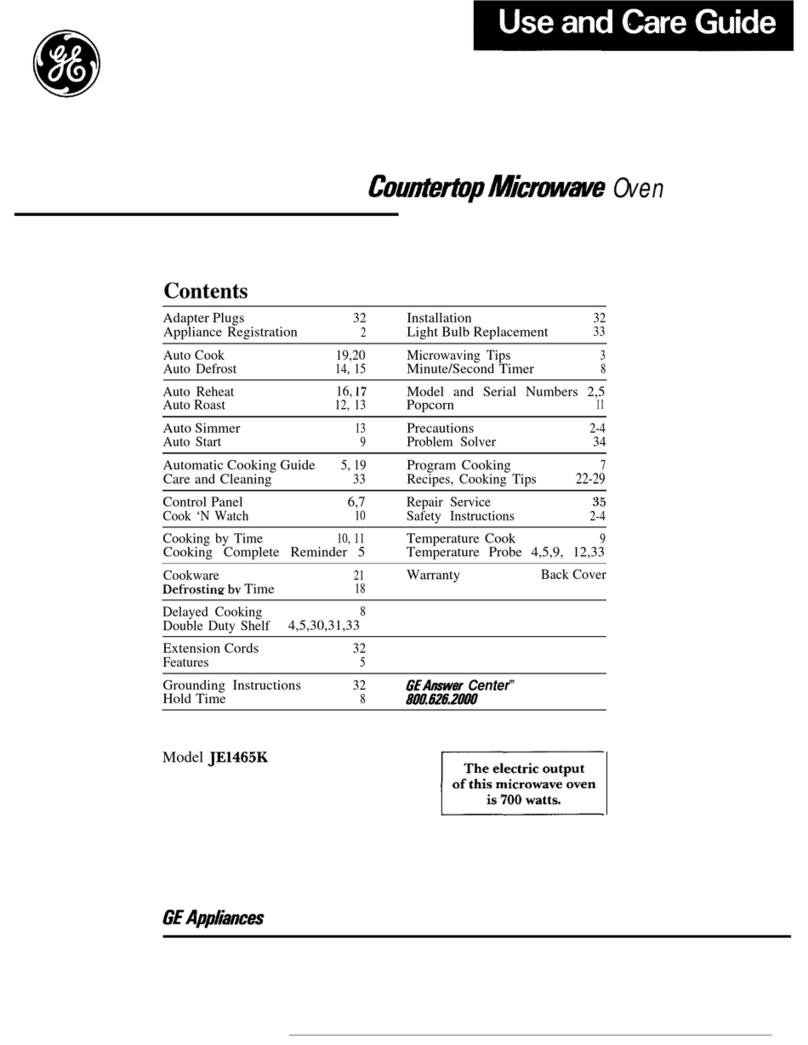
GE
GE JE1465K User manual
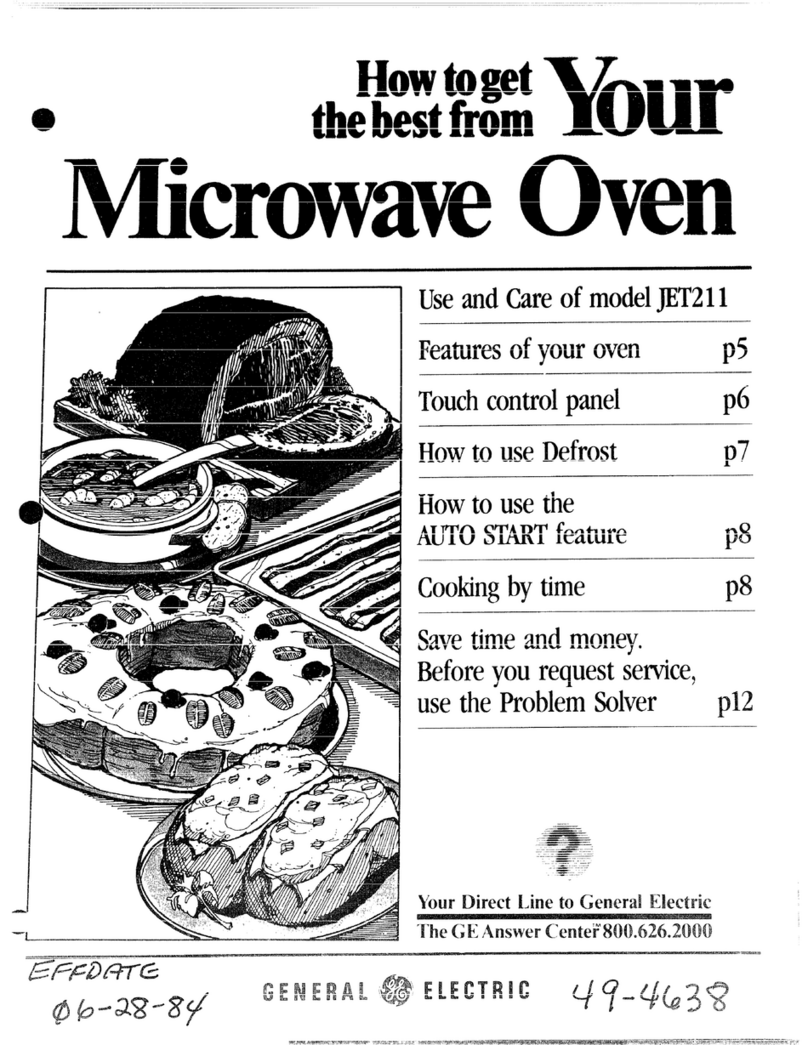
GE
GE JET211 Specification sheet

GE
GE PEM31 User manual
Popular Microwave Oven manuals by other brands

Conrad Electronic
Conrad Electronic 2372935 operating instructions

DAEWOO ELECTRONICS
DAEWOO ELECTRONICS KOR-6L8K5S83 Operating instructions & cook book

DAEWOO ELECTRONICS
DAEWOO ELECTRONICS KOR-1N5A9S Operating instructions & cook book

Daewoo
Daewoo KQG-6617G Operating instructions & cook book

Samsung
Samsung M1779 Owner's instructions

Miele
Miele H6200BM(TB) Operating and installation instructions

Jocel
Jocel JMO011480 instruction manual

Sharp
Sharp R-752M Operation manual with cookbook

Electrolux
Electrolux EVL8E00X user manual

STOVES
STOVES Q900GRF DO User, installation & servicing instructions

Daewoo
Daewoo KOR-6L0B3S Operating instructions & cook book

KitchenAid
KitchenAid KCMS1555 Use and care guide
